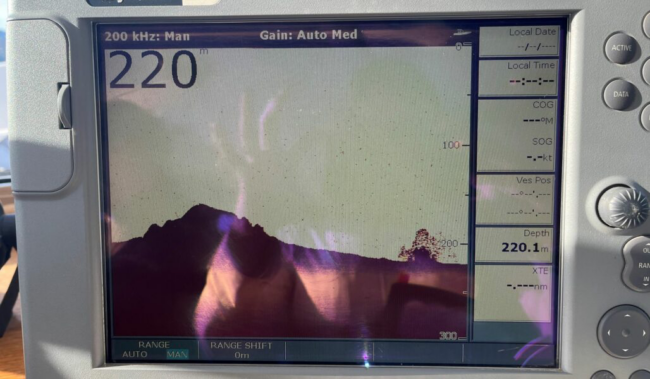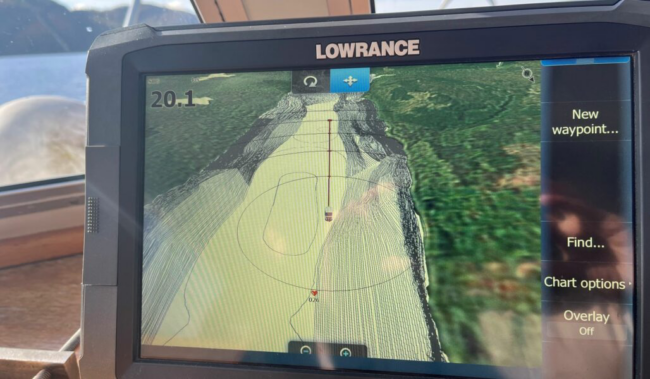
Since the 1930s, the Loch Ness Monster myth will occasionally pop up and gain a bit of media traction. This latest example comes via “researchers” at The Loch Ness Centre, and yes, there is a reason for the air-quote there, we will come to the reason for that soon enough.
I’m sure you are familiar with the myth, but just in case it passed you by, the idea is this – there is an ongoing series of claims that something prehistoric lurks within the murky waters of Loch Ness. Various sightings over the years describe it as large, long-necked, and has one or more humps protruding from the water.
The picture at the top of this posting looks real, so what’s the story there?
What is now known about that specific picture is that it was a hoax created by Christian Spurling, the son-in-law of actor, screenwriter, director, producer, and big-game hunter M. A. Wetherell. What had started it all was a previous hoax of “Nessie footprints” that Wetherell was convinced were real, then when exposed as a hoax, the Daily Mail newspaper publicly humiliated Wetherell for being gullible. To get revenge Wetherell and his son-in-law Spurling cooked up the photograph hoax and then successfully persuaded the Daily Mail to publish it as real. (details here). Apparently when it was published and went viral, they were shocked at how popular the idea became, so they decided to keep quiet.
Inevitably, as is the way of such things, despite being debunked and exposed as a hoax, there are some who dismiss the debunking as fake, and still embrace the now confirmed hoax as real.
OK, so even if we know the famous picture was fake, there are still lots of other reported sightings, so is it really possible?
Loch Ness itself is rather large. Its deepest point is 755 feet, and the loch is roughly 23 miles long, so for some the possibility that something unknown and mysterious is there does indeed tickle the imagination. There is however one small flaw with the idea that some ancient dinosaur still lives on. The formation of the Loch is not all that old, it was carved by glaciers during the last ice age which was in geological terms rather recent, or to be more specific, roughly 10-20 thousand years ago. If indeed there is a monster lurking within the depths, then it only very recently moved in.
“But but but … all the sightings“, some might still quip.
OK, let’s step back and take this step by step.
First I’ll cover off the details of the latest “sighting” (yea, air quotes again). Then I’ll lay out the scientific evidence that confirms that there really is no monster.
What is the latest Reveal?
There are lots of tabloid articles that cover it all, but the actual alpha source comes from a press release put out by The Loch Ness Center on Oct 10, 2024.
They report …
On Thursday 3rd October, we had a finding whilst onboard Deepscan, which has advanced sonar technology to explore the depths of Loch Ness daily. The radar system recorded a sizeable reading that has sparked intrigue and speculation among researchers and enthusiasts.
The radar system, specifically designed to detect underwater objects and formations, identified a distinct anomaly in the loch. While the exact nature of these readings remains under investigation, preliminary analysis suggests they could represent substantial underwater presences or potentially large aquatic creatures inhabiting the loch.
They also have these images …


They go on to say …
The reading on Thursday 3rd October at n57°14.850 w004°31.688 suggests there was a disturbance on the loch bed. At the time, we were out on the loch with Aberdeen University for our first official deployment of weeHoloCam and we were passed Urquhart Castle and were heading down to Fort Augustus when we spotted the disturbance on the loch bed.
Deepscan cruise uses cutting-edge technology to investigate the unique underwater environment of Loch Ness. With the use of sonar and radar systems, a hydrophone and most recently a state-of-the-art holographic camera, Deepscan has been able to provide us with a detailed understanding of the loch to date.
And they also have a quote from Nagina Ishaq, the General Manager of The Loch Ness Centre …
“These radar readings have raised many questions about what lurks in the depths of Loch Ness. Our Deepscan cruise has consistently aimed to deepen our understanding of the loch’s ecosystem, and this finding shows that there are still many unknows about the loch. We are currently working with Loch Ness researchers to conduct further analysis of these readings which hopefully mark a major milestone in the search for Nessie.”
She is of course right, this does indeed raise many questions … one of which is, exactly how gullible do you really think we all are?
The “evidence” is that a disturbance was spotted and the immediate go-to was “its the monster”. This is really not evidence.
OK, I have a bit of a reveal here.
Who exactly is The Loch Ness Center?
The Loch Ness Center goes out of their way to explain …
If you do spot something mysterious at Loch Ness? We want to see it! Share your videos and photos with us using our online form.
Looking at the image of the DeepScan above, you can see the reflection of somebody taking a snap with their smartphone. That would be enough to fill in the form with.
“Oh“, they say when they get the picture, so tell us who you are. “I and my friend are students from Aberdeen University studying politics“. “Good enough“, they think and so claim that they were out on the loch that day with “Aberdeen University“, and so they spin it to keep the myth rolling and thus ensure they drum up lots more business.
You also can go on the 45 minute Deepscan Cruise which runs multiple times each and every day and costs £21 per person to conduct your very own Loch Ness “Research”.
Why can you be certain there is no Monster and that it is just a myth?
OK, let’s talk about eDNA.
Life leaves bits of itself behind — poo, skin, etc. If you take samples of water or dirt then you will be able to isolate and decode this environmental DNA (eDNA). That can then be matched against a DNA database to see what you have got from your sample. This is becoming an increasingly powerful scientific tool for two reasons …
- The cost of sequencing DNA continues to rapidly drop.
- The DNA Databases are rapidly growing
Yes, lots of different DNA is all mixed up within any sample, so what you do is to use DNA metabarcoding and then do an automated lookup within a DNA library. For example, BLAST (basic local alignment search tool) is an example of a way to do this.
The beauty of this approach is that you can in effect take a complete snapshot of an entire ecosystem. The value this brings is that you gain extremely valuable insights that are not practically possible via any other means.
And yes, you can see where this is now going.

In 2019, Professor Neil Gemmell decided to gather eDNA samples from Loch Ness.
His colleagues ridiculed him for even attempting this, but this was his response …
Some of my colleagues have said, oh, this is just a bit silly and you’re diverting attention from important questions — why don’t you tell them about the really cool stuff, not this nonsense? And I said, well, you know, I’ll tell them about whatever people are interested in. And I will try to take the conversation in a direction where I can add a bit of knowledge in and around what we do, attached to the idea of something that people actually give a damn about.
He is not wrong about that.
So what did he find?
No Plesiosaur DNA, nor anything that even hinted at any kind of monster.
Via the 2019 press release, we learn …
What I’m most satisfied with is that we came here to study environmental DNA, and our analysis has captured everything we thought is in the loch. We now have an excellent database which if compared to any future testing could enable us to identify trends and changes in the Loch environment. That is essentially the benefit of eDNA — it is an extremely powerful and robust tool to document the living things (both large and microscopic) present in a given place. It’s going to be extremely useful in the future as the technology becomes quicker and more accessible, more data is created.”
Professor Gemmell says one of the more intriguing findings was the strong input of DNA from land-based species in the Loch.
“We found substantial levels of DNA from humans and a variety of species directly associated with us such as dogs, sheep and cattle. However we also detected wild species local to the area such as deer, badgers, foxes, rabbits, voles and multiple bird species. These findings indicate eDNA surveys of major waterways may be useful for rapidly surveying biological diversity at a regional level.”
Sorry folks, no monster. This is a rather conclusive result.
But what about all the sightings?
The myth continues to prevail, not because it is true, but because so many need it to be true.
The tourist industry in the area really does need to drum up interest, and so any vague fuzzy thing sincerely reported, along with every hoax, will be catalogued and then promoted to generate more interest.
The myth is now deeply embedded in our culture and it will continue to bubble away.
Persuading people to take a 45 minute trip on a loch for £21 per person is something many would normally take a pass on, but add in the myth and the possibility that they might spot the monster and there will be long queues.
Personally, if I was there with my kids, I’d be willing to pay up even though I know its all myth.
The entire myth perhaps tells us rather a lot about the human experience and our willingness to embrace mythology via story telling.
